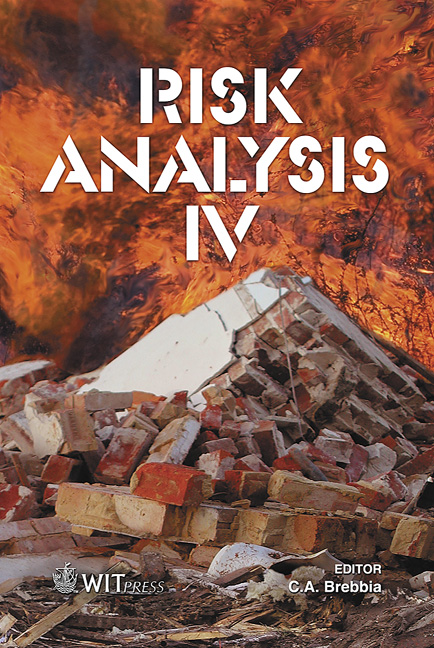An Integrative Model Of Natural Hazard Risk Evaluation
Price
Free (open access)
Transaction
Volume
77
Pages
10
Published
2004
Size
253 kb
Paper DOI
10.2495/RISK040591
Copyright
WIT Press
Author(s)
T. Plattner
Abstract
Since risk mitigating measures have to be accepted by society, risk evaluation by lay people has to be considered in risk management. Due to time and financial constraints, it is impossible to gather this information on a case-by-case basis. Therefore, a model of risk evaluation that accounts for the public risk perception and evaluation is suggested. The perception affecting factors PAF and the objective risk Robj are important for the perception of the risk. For the decision about the acceptance of risk the evaluation criteria EC are relevant. Together, the PAF, the EC and the Robj allow one to predict the accepted risk Racc. According to the different types of human behavior, the model of ‘Prospect Theory’ is applied to obtain relevant information about the evaluation and acceptance of risk for different types of persons. Keywords: natural hazard, risk evaluation, risk perception, risk aversion, Perception Affecting Factors PAF, Evaluation Criteria EC, Prospect Theory. 1 A risk-based approach for the management of natural hazards Dealing with natural hazards has recently shifted away from being hazard-oriented towards a more risk-based approach (‘From the avoidance of hazards towards a culture of risk’[1]). Such a modern proceeding comprises, generally, three components (see e.g. [2]): Risk analysis (see Fig. 1) is the ‘process of quantification of the probabilities and expected consequence for identified risks’ ([3]). Consequently, it provides information about the extent and frequency of the expected damage and answers the question ‘What can happen?’ ([2]). In its simplest formulation, the objective risk Robj may be defined as the product of the frequency (or probability) of
Keywords
natural hazard, risk evaluation, risk perception, risk aversion, Perception Affecting Factors PAF, Evaluation Criteria EC, Prospect Theory.





